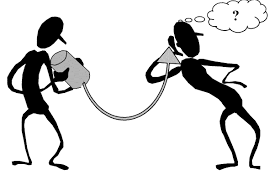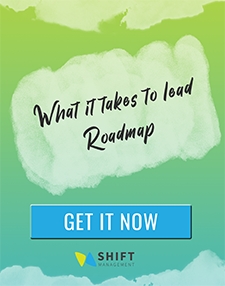
Have you felt frustrated with yourself for not being able to change habits?
Maybe you’ve heard yourself saying, “Just this one chocolate bar,” or, “Tomorrow I’ll get serious about this,” when you are trying to make a lifestyle or workplace change.
When struggling to move from one less-desirable behaviour and into a better one, there are common self-rationalizing habits we all fall into. Most of us have hundreds, if not thousands of small self-sabotaging behaviours that seem to jump up and bite us as soon as we take a step towards making any progress towards a goal.

Why leaders need to master change
As people in leadership roles, we have to get good at making this shift. If we don’t then the encouragement we offer to others to “make changes” and “be more productive” or “become more effective” is nothing more than a hollow set of words. We’ve got to provide the example.
But trying to eliminate self-sabotage behaviour is like trying to use a bucket to take darkness out of room. Buckets might work in a room covered in a foot of water, but you need something different to use in a space flooded by darkness.
Exercise is a perfect example – how many people say they are going to “get in shape” only to find month after month that there is no sustained change to their lifestyle or weight loss? They desperately want to make exercise a regular habit, but they don’t know how.
At work, you may realize you have a certain harmful habit. Maybe you always interrupt others – to the point where they get angry and demand that you let them finish what they are trying to say. You know you need to change it, but you don’t know what to do to break out of the old pattern. When you try, things get better for a while, but will power alone does not keep you from falling back into old ways.
Well, friends, there is hope. And it comes, perhaps not so surprisingly, from marketing research.

Learning to influence yourself
At its core, marketing is about influencing people – including you – and using that influence to drive sales. One purchase is good, but multiple or ongoing purchases are really the ultimate goal. And, in an industry that lucrative, you can imagine there’s a full field of scholarship to help maximize both influence and, thereby, revenues.
Here’s the good news: in the process of revealing what influences us, there is one person who has also discovered how we can influence ourselves better. Unlike many marketing writers looking to make sales, Robert Cialdini started his research to develop techniques to resist sales tactics.
Describing himself as the “ultimate pansy” who falls for everything from girl guide cookie campaigns to telemarketer surveys, his studies in human habit forming behaviours were fueled by a desire to get better at resisting influence so he would not be a pushover himself! As an aside he discovered, like many inventors do, strategies to release our powers to influence our own behaviours.
In his latest book “Pre-suasion: A revolutionary way to influence and persuade,” Robert Cialdini reveals several ways we can affect our own behaviours (get a summary of his persuasion tactics here). One very powerful and simple one is the, “if/when…then” plan to re-condition yourself to do something differently and most importantly, to keep on doing it differently until the old behaviour disappears. This is how it works.

Let’s say you always snack before bedtime and you want to change that behaviour. You say to yourself, “When I feel like getting a snack before bed, instead of going to the kitchen, I will go to the bathroom and brush my teeth.” You can make that plan stronger by writing it down, posting it on a door, and telling others that this is your new plan. You can even make it a public challenge by telling your Facebook friends that this is your strategy and that you’re going to make it work for five days in a row.
By following these steps, you’re priming yourself for success. Cialdini calls it the “if/when…then” plan. By putting conditions onto your current habit (When I feel like getting a snack before bed…), you come up with directions (Then I will go to the bathroom to brush my teeth) that create the map you need to get to the habit you want.
This has even worked with patients who were notorious for not taking medication. In one study, epilepsy sufferers asked to create an “if/when…then” plan rose from 59% of the patients taking their medication regularly to 79%. One “if/when…then” plan in that circumstance was:
“When it is 8:00 a.m. and I have finished my coffee, then I will take my medication.”
To make it more effective you could add:
“Before I go to bed at night, I will put my medication next to the coffee maker with a sticky note ‘Medication done.’ When I get up in the morning, I will take my medication while my coffee is brewing. After taking my medication, I will take the medication note and stick it on the fridge for the next day.”
The more specific and the more visual cues you can add in, the more likely you are to be successful in creating your new habit.

What to do when your change efforts aren’t working
But, we all know that as much as we might try to be perfect, we will not follow even the best-crafted plan 100% of the time. So, to use the medication example again, you mitigate for that in the same way: “If I forget to take my medication, then…”
Let’s take the interruption example:
“If I jump into a conversation before the other person has finished, I will remind myself to focus on what the other person is saying by scratching the back of my head three times.”
Or:
“When I realize I have interrupted someone, I will take a breath in, hold it for the count of three and then slowly let it out for the count of three, while saying to myself ‘focus, focus.’”
You can already see how self-awareness is the key to making this approach work. The second step is to associate that self-awareness with the “desired behaviour” rather than staying focused on the un-desirable behaviour. And, if you worry that you aren’t as aware of your own behaviour as you could be, get others to help.
Back to the interruption example. You can start by asking someone else to count how many times you interrupt just for a day, or maybe even just during the meeting you’re about to attend. Just the act of knowing that someone else is watching you will help you attune to your own behaviour.
So, when you realize you’re interrupting, resist focusing on the negative behaviour by excusing yourself, “I always interrupt, that’s what I do.” Recognize that your justification of “this is just who I am” is sabotaging your change efforts. Your behaviour is simply not who you are. You are who chooses your behaviour and that ordering is important.
Instead, set an “if/when…” Then use your new map to help you get to your desired behaviour – in this case, focused listening.

“If/when…” statements allow you to move from the problem directly toward the actual desired behaviour. I’m using this technique now to (how did you guess) stop snacking before bed and to stop interrupting. I’ll let you know how it goes, but so far the results are promising!

Looking for more ways to build your leadership skills? Check out some FREE online learning that will help you hone your communication skills – with your boss!
About Marie:
Marie Gervais, PhD, CEO Shift Management is a business-to-business entrepreneur who specializes in helping employers train their middle management to lead, get their workplace learning online and interactive, and conduct team assessments to figure out who to promote and how. She has a background in integrating internationally-trained individuals to the workplace and has supported many businesses in their efforts to hire, retain, support and promote immigrant and diverse employees.
Get in touch – she would love to hear from you: marie@shiftworkplace.com or 780-454-5661






